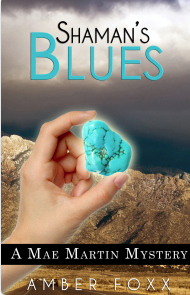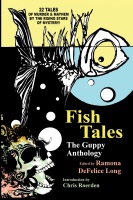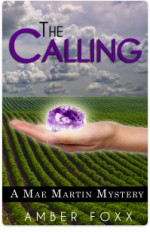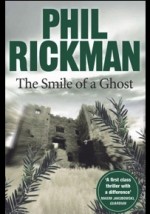Today I am pleased to present an interview with one of my favorite writers, Clea Simon, author of the Theda Krakow, Dulcie Schwartz, and Pru Marlowe mysteries.
 SAT: Tell us a bit about your writing journey: when you started to write, your journey to publication, and so on.
SAT: Tell us a bit about your writing journey: when you started to write, your journey to publication, and so on.
CS: I have always loved making up stories and have been writing stories since I could read. But it took me a while as an adult to think my stories had any validity. I became a journalist and wrote three nonfiction books in part because of this: I felt like if I was conveying information, then I had a reason to write. But I largely read fiction. It wasn’t until Kate Mattes, who owned the now-closed Kate’s Mystery Books in Cambridge, Mass., told me, “You should write a mystery” that I started my first one, “Mew is for Murder.” I think in some way I needed permission.
SAT: Why do cats feature in most of your books?
CS: I’m not sure, except that I love cats and have long lived with them. When I started writing the Pru Marlowe pet noir, I didn’t intend for the protagonist to have a cat. I wanted to write a tough, dark heroine. But as I was writing it turned out that she had an even tougher tabby.
SAT: The heroine’s psychic abilities in the Pru Marlowe series come off to me as very realistic in the way that animal thoughts are portrayed. Did you do any kind of research for this series, for example, reading about how animals think and perceive the world?
CS: I do. This fascinates me — learning, for example, how parrots see or how ferrets express agitation. It’s just such a different language. Cats, of course, I know from experience, but other animals I have to research.
SAT: Are there are particular books or websites you consult for researching animal psychology?
CS: Not one particular one. Because of my background in nonfiction, I like to think I’ve got pretty good research skills. Plus, when I wrote “The Feline Mystique: On the Mysterious Connection Between Women and Cats” (St. Martin’s), I amassed a pretty great personal library of books about animals and I’ve got some great friends. Vicki Constantine Croke, who writes about animals, is often my first go-to person: she has connected me to some wonderful experts. Sometimes, it’s just a question of calling around: Who has a ferret? Who works with rescue dogs? There’s always somebody who is willing to share expertise. So many writers get things wrong that the experts are usually really grateful when one of us at least makes the effort! That’s why I try to always say in my acknowledgments that any errors are all mine.
SAT: Dulcie and Pru are such very different personalities. Which do you resemble the most? In what ways are you different from either?
CS: I think they’re both sides of my personality — as are all my characters, probably! If I can’t relate to a character, even a killer, then I don’t know how I’d write them. That said, I’m not nearly as tough as Pru (or Wallis) nor as studious as Dulcie. I do live a bit too much in my head, though, as she does — and in books.
SAT: Both the Dulcie Schwartz and the Pru Marlowe books contain elements of the paranormal, a cat-ghost in Dulcie’s case and a (sometimes unwelcome) psychic ability in Pru’s. What led you to include these elements in your mysteries?

First in the Dulcie Schwarz series
CS: Dulcie’s first paranormal experience with Mr Grey, the scene that opens her first book, “Shades of Grey,” is something that happened to me… almost. I had lost my beloved gray cat, Cyrus, to age and kidney disease. I missed him terribly — but then one day, I swear I saw him. He did not tell me that anyone had been murdered, though. At any rate, the story just grew from there. As for Pru, well, don’t we all feel like we really know what our animals are telling us? And that this makes us a little crazy?
SAT: What is it about mysteries that appeals to you as both reader and writer?
CS: I love the puzzle aspect. But I think the secret to mysteries – at least to good ones – is that they’re about the characters. With a series, you get to revisit people you’ve come to know and, hopefully, love. That’s very appealing to me as a reader and very much so as a writer.
SAT: What’s next for Clea Simon?
CS: Well, I am pleased as punch to have just been contracted for two more Dulcie books — and that’s not including the one that is now in production (“Stages of Grey,” which will be out in October). I am also working on the next Pru book, and my contract covers another one after that so that carries me into 2016. Beyond these books — four still to write, five to see light of day — I don’t know. I really hope that my publishers will want to stay with me. I am beginning to think I would like to write something different. A stand-alone or maybe even a non-mystery. But I can’t see leaving crime fiction behind, and any mystery I write will certainly have kitties in it somewhere. So we shall see!
Read more about Clea and her books at: http://cleasimon.com/
Clea’s most recent releases are:
 Grey Howl: A Dulcie Schwartz feline mystery
Grey Howl: A Dulcie Schwartz feline mystery
A prestigious literature conference is convening in Cambridge and Dulcie Schwartz is the university liaison for the event, meeting and greeting some of the finest minds in her field.
But events do not run according to plan when one scholar’s presentation is sabotaged while another visiting professor disappears. As Dulcie and her boyfriend Chris struggle to solve problems and soothe egos, a strange apparition starts to haunt the bi-annual event. And even Mr Gray, the ghost of Dulcie’s late, great cat,,appears to be overwhelmed, leaving Dulcie to manage an increasingly backstabbing crew of professional rivals, one of whom may be a killer.
And, just released:
 Panthers Play for Keeps: A Pru Marlowe pet noir
Panthers Play for Keeps: A Pru Marlowe pet noir
When Pru Marlowe takes a dog for a walk, she doesn’t expect to find a body. But Spot, a service dog in training, has too good a nose not to lead her to the remains of the beautiful young woman, and despite her own best instincts, Pru can’t avoid getting involved. The young woman seems to have been mauled by a wild cat – and Pru knows there have been no pumas in the Berkshire woods for years. And while Wallis, Pru’s curmudgeonly tabby, seems fixated on the idea of a killer cat, Spot has been sending strange signals to Pru’s own heightened senses, suggesting that the violent death was something more than a tragic accident. As motives multiply, a cougar of a different sort sets her eyes on Pru’s sometime lover, and another woman disappears. With panther panic growing, Pru may have to put aside her own issues – and her own ideas of domesticity – to solve a savage mystery.






















